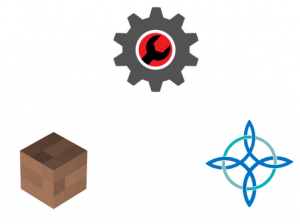BLACKSBURG, Va., March 6, 2015 – AddHawk is a group of Computer Science students taking their Human Computer Interaction capstone project to a massive scale. They begun working on an application called PixelPusher, a massive crowdsourced display in Lane Stadium, using all the attendees mobile device screens as pixels. This type of project, mobile phone mosaics, has been attempted by several companies before, including Sony, HTC, and Blinkendroid. “The current guinness world record is 400 devices, we’re optimistically looking at 50,000.” said PixelPusher developer Michael Peter. The current record belongs to China Unicom, Sohu IT and HTC which used 400 HTC One devices in July of 2013, playing a one minute advertisement. This project could beat that record by over a hundred times the amount of screens.
Updates on PixelPusher:
Over the course of the past week, the AddHawk team completed the stages of Contextual Inquiry, Contextual Analysis, and Requirements extraction. A set of potential users were chosen, all with the common trait that they have attended Virginia Tech football games and may again in the future and or were in our domain of potential users. To get a wide set of results, other characteristics of the users were much more varied. Outliers such as individuals with only very basic working knowledge of a smartphone and other Computer Science students were chosen. Since this is a continuing process, please feel free to contact us at cmw2379@vt.edu and we would love to hear your opinion and ask you some questions.
“It’s really important to get a look at very different users. In order for this project to be successful, its absolutely critical that the implementation feels accessible to virtually every fan with a smartphone.” said AddHawk Backend Developer Michael Peter.
Contextual Analysis revealed striking similarities between many of the users. Almost every person interviewed revealed that they would be interested in having a display when attending a Virginia Tech football game, but the effort required to create signs for themselves was the ultimate limiting factor. Also, the process of getting enough people together to perform this is difficult to coordinate. One of our lead Frontend developers, Connor Hoene, has strong feeling about this stating, “Building a way to interact with a crowd that uses your smartphone is such an incredible idea and such a natural extension of how we use our phones nowadays. The fact that something like this doesn’t already exist is staggering”. Alongside all of team AddHawks successes this week, the team is excited with what they learned and look forward to moving forward with this process. Once again, the team is building PixelPusher for the community and would love any input you, the people, would like to share. If you want to say hi, or give us a piece of your mind, please let us know at cmw2379@vt.edu.
A Look Into the Future:
With a much stronger understanding of the potential user base of PixelPusher and their requirements, it is time for the AddHawk team to begin its first round of prototyping. The team is very excited to finally get a chance to test out the several different ideas that they’ve been debating since the idea first took flight. Frontend developer Dillon Gresham enthusiastically stated, “In this set of interviews we were able to communicate with potential Users which really helped us narrow our prototype ideas down. The team gained a lot of insight into how Hokie football fans view their smart phones and the applications the phones hold.”
Mission Statement:
PixelPusher will allow football fans in Lane Stadium at Virginia Tech to display individual pixels on their phones which are part of a larger image. In this way PixelPusher acts as a crowdsourced collaboration application that will bring together football fans everywhere. PixelPusher also aims to break the current world record of 400 connected devices. The application will be developed with the idea of simplicity and efficiency at heart, providing a lightweight, seamless user interface to football fans at Virginia Tech.
“AddHawk is an up and coming software development initiative aimed at revolutionizing how a single member of a crowd can have a huge impact on an event. ”
For more information or questions please contact: cmw2379@vt.edu

